REFLECTIONS ON THE LOSS OF ASTERIA
DER UNTERGANG DER ASTERIA – FAKTEN UND ÜBERLEGUNGEN
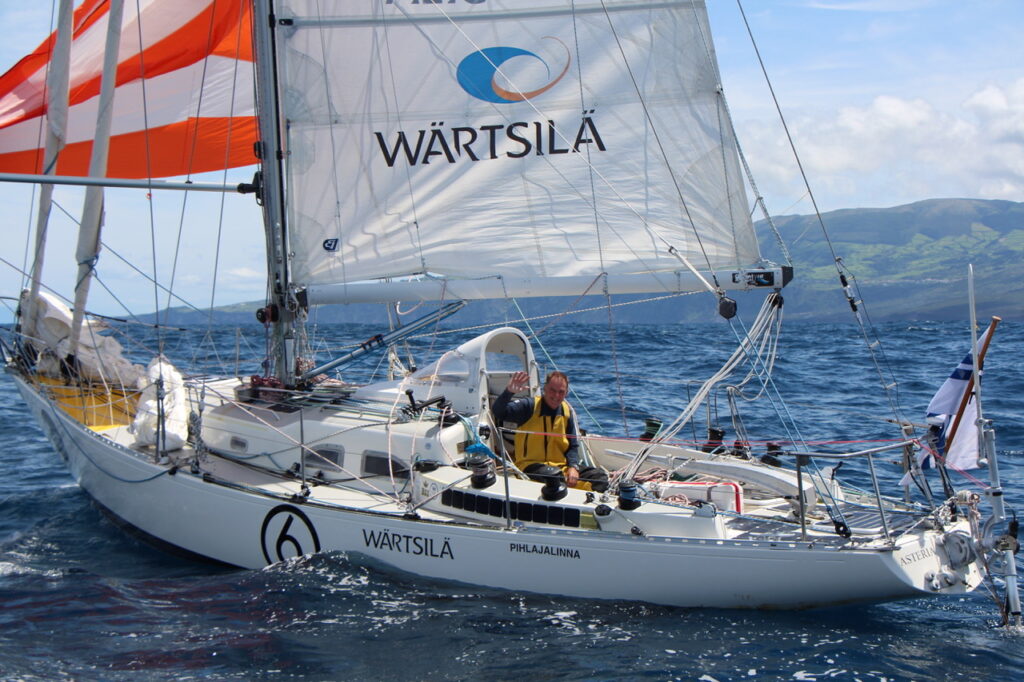 It has been two days since Asteria slipped beneath the waves. Thanks to a professionally coordinated rescue, Tapio is now on a cruise to China and with him safe and well, thoughts are inevitably turning to what could have caused Asteria to sink.
It has been two days since Asteria slipped beneath the waves. Thanks to a professionally coordinated rescue, Tapio is now on a cruise to China and with him safe and well, thoughts are inevitably turning to what could have caused Asteria to sink.
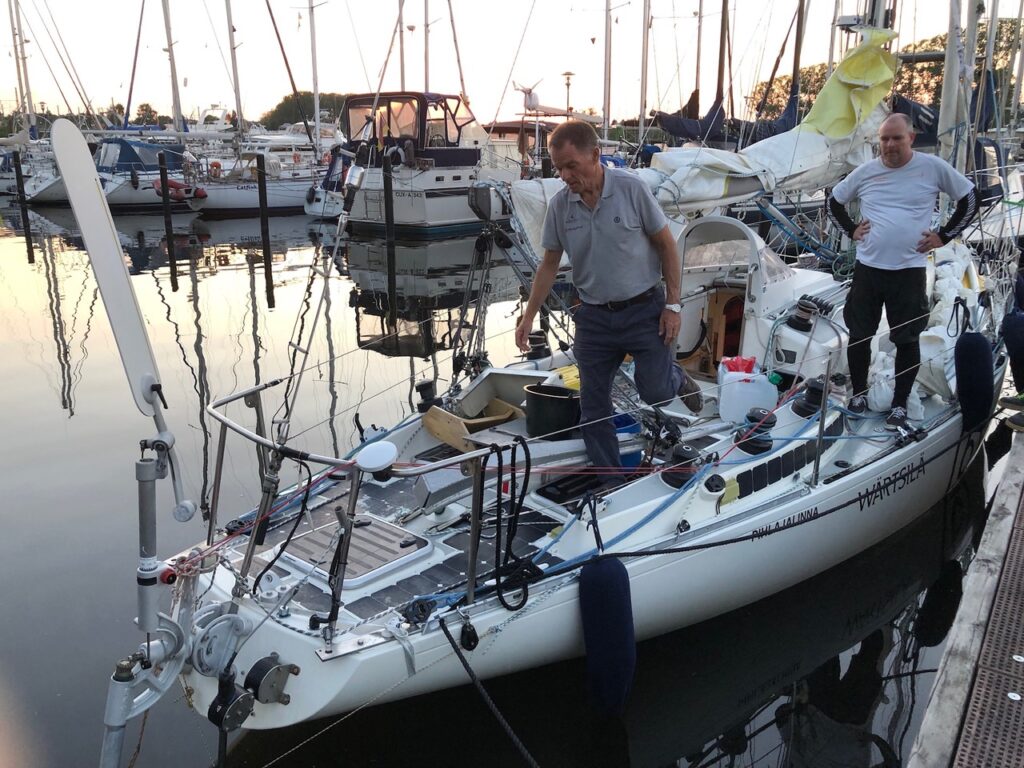 As readers will be aware, I worked very closely with Tapio between 2016 and 2019. We seemed to be very much on the same wavelength, exchanging hundreds of e-mails and cooperating very effectively. It was a lot of fun for both of us and an experience for which I am most grateful.
As readers will be aware, I worked very closely with Tapio between 2016 and 2019. We seemed to be very much on the same wavelength, exchanging hundreds of e-mails and cooperating very effectively. It was a lot of fun for both of us and an experience for which I am most grateful.
Having had a unique insight into Tapio’s first GGR campaign and followed his second with keen interest, I would like to share some observations and thoughts that may perhaps be relevant to Asteria’s sudden loss.
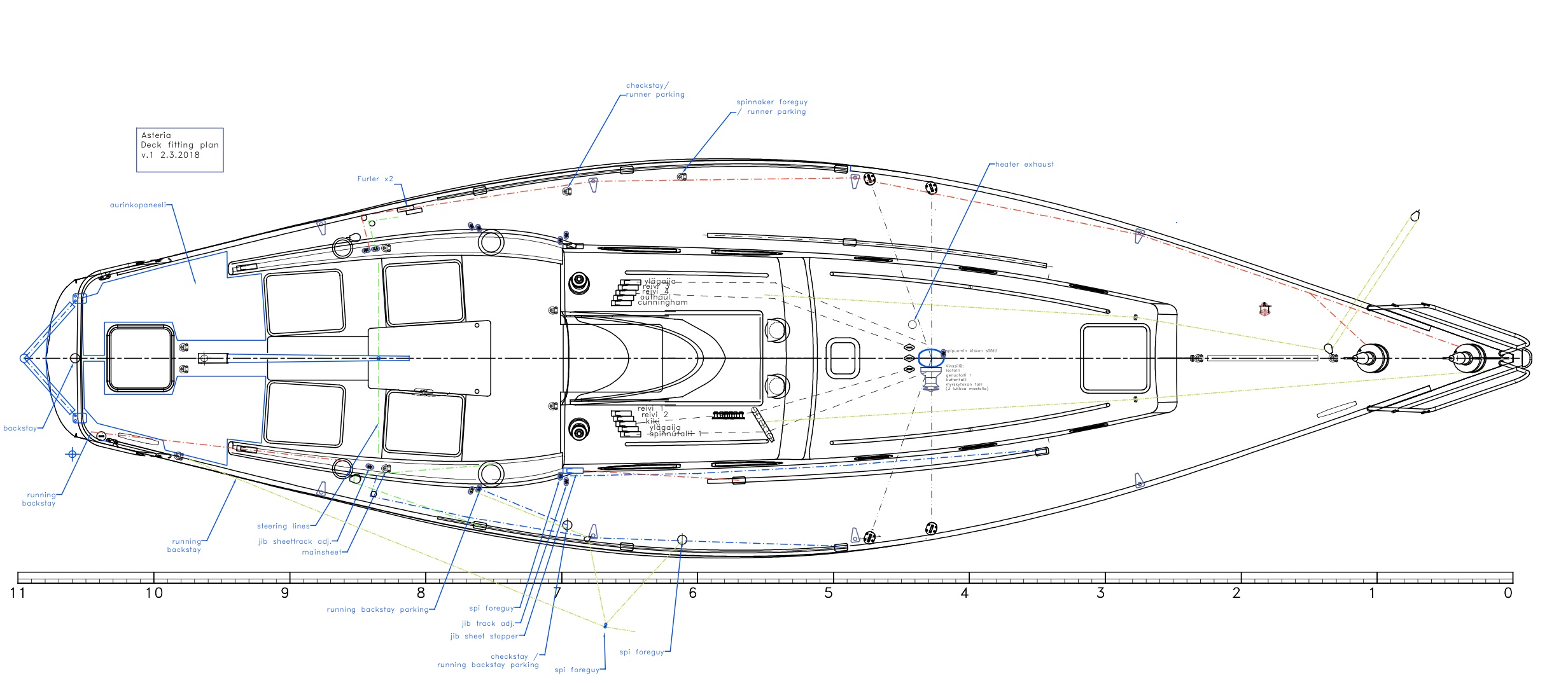
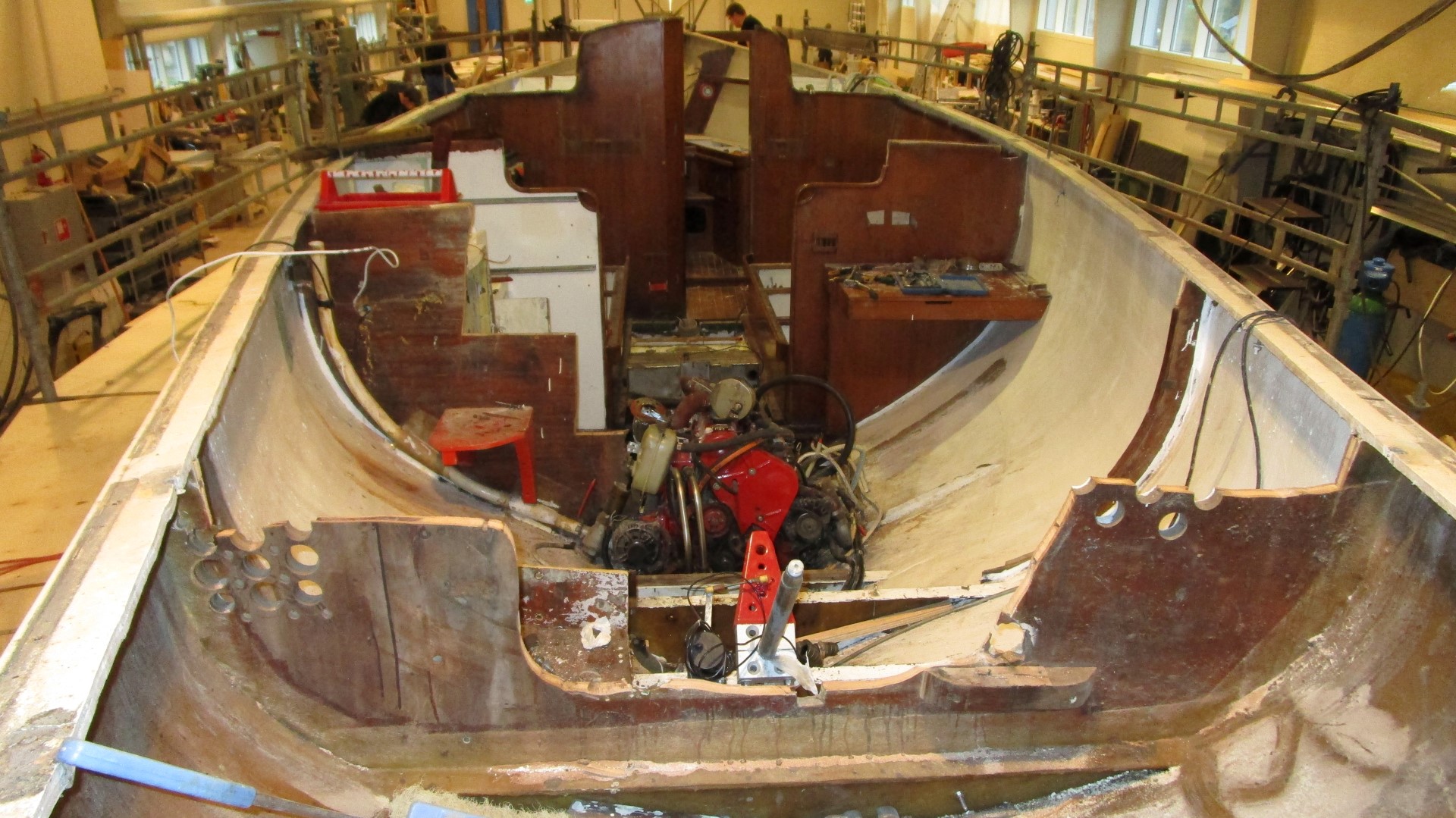
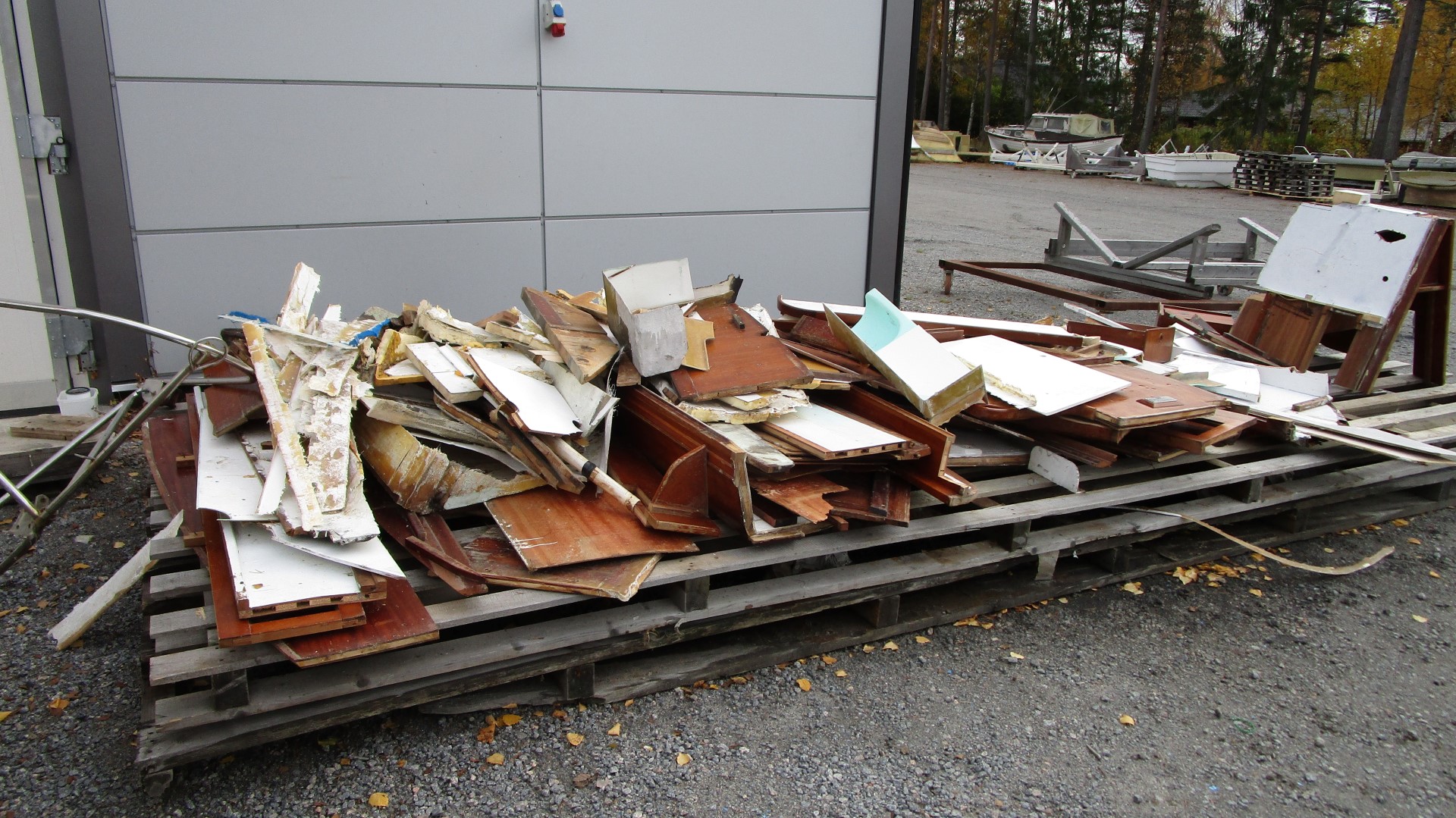
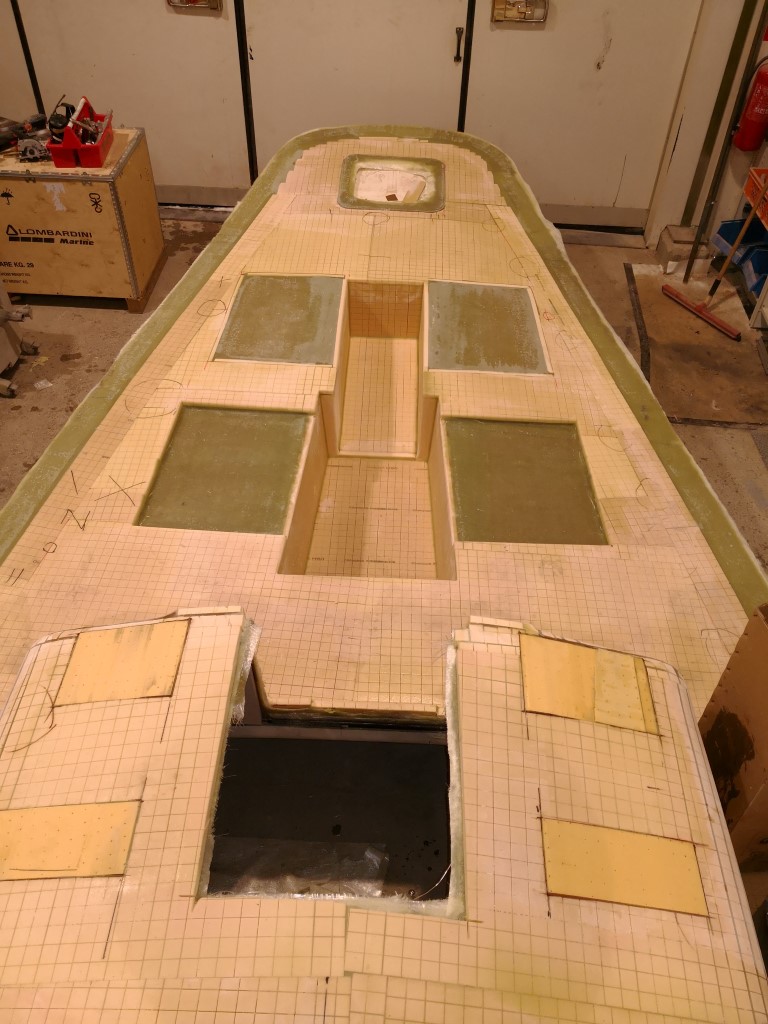
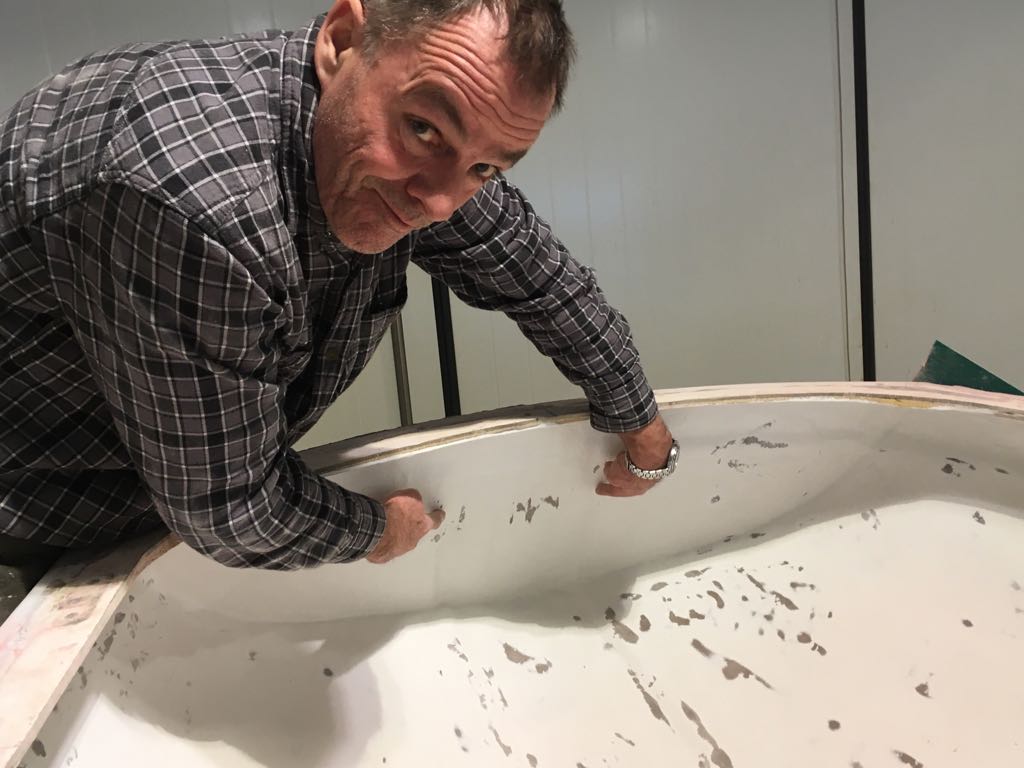
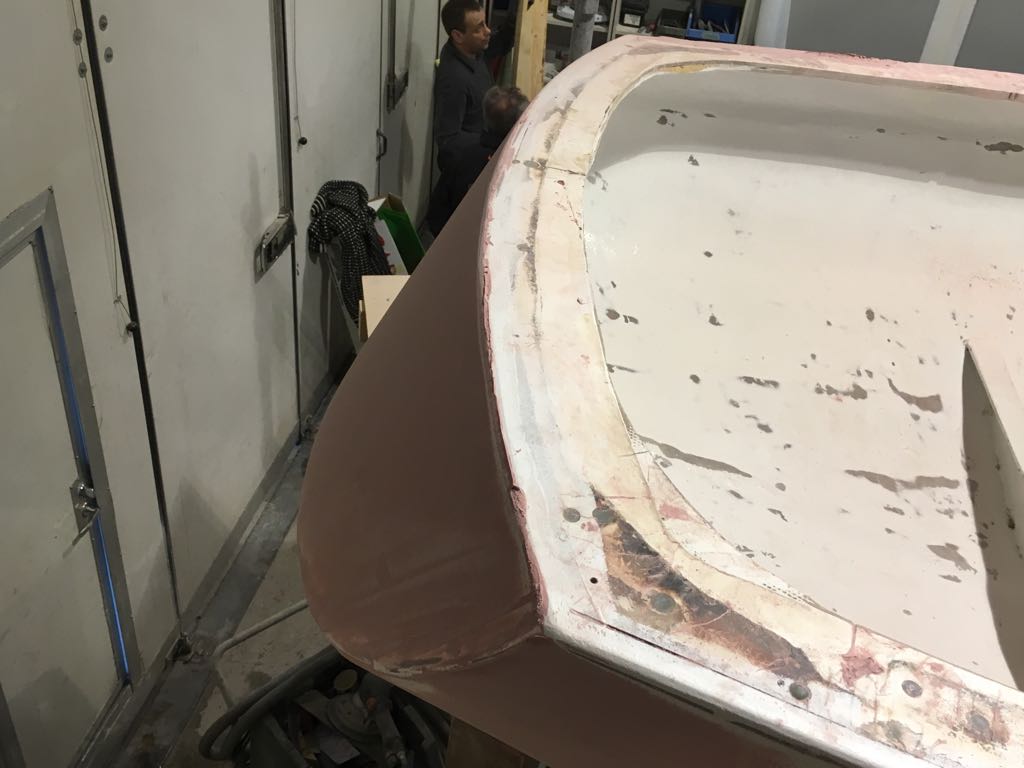
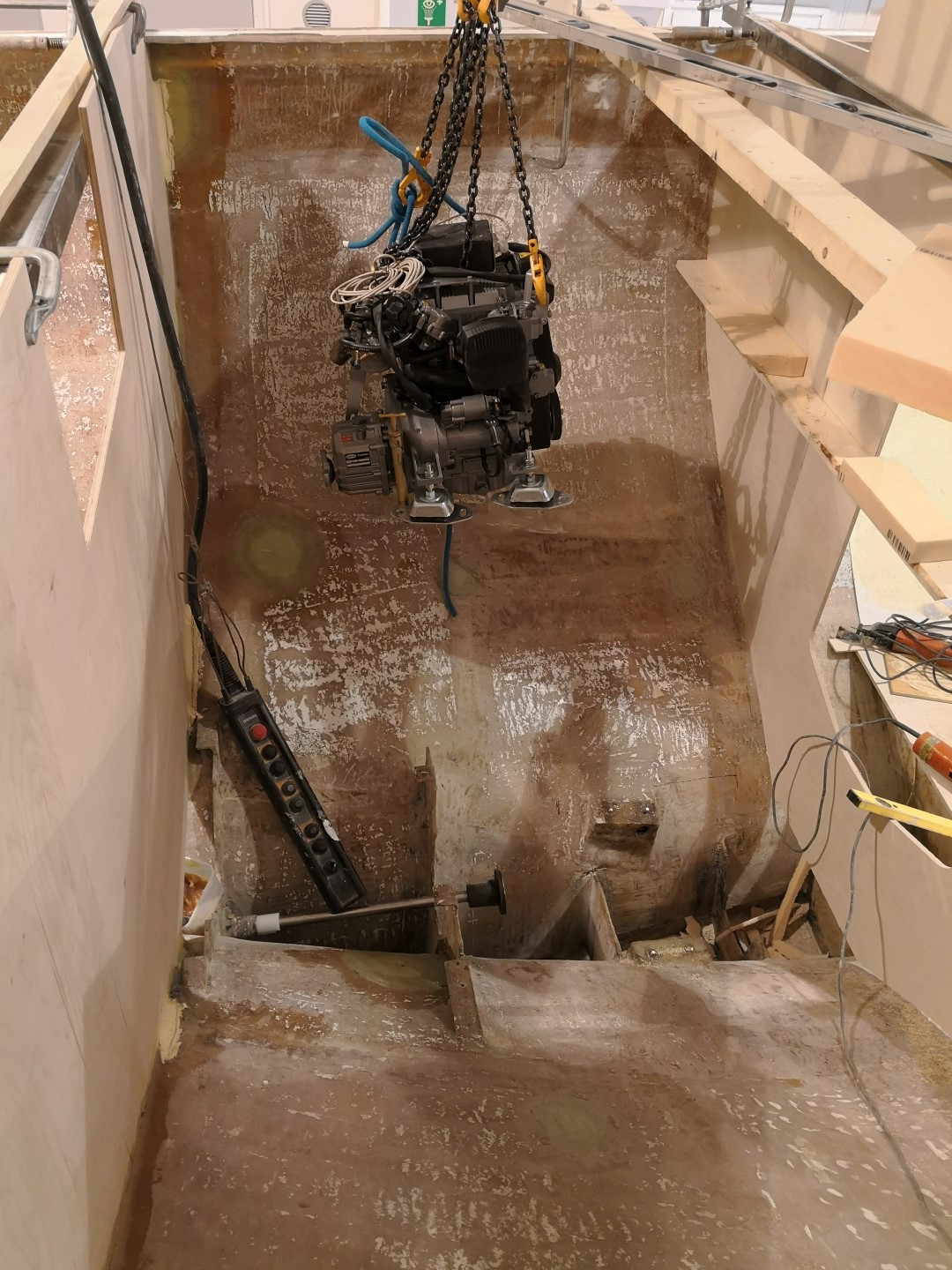
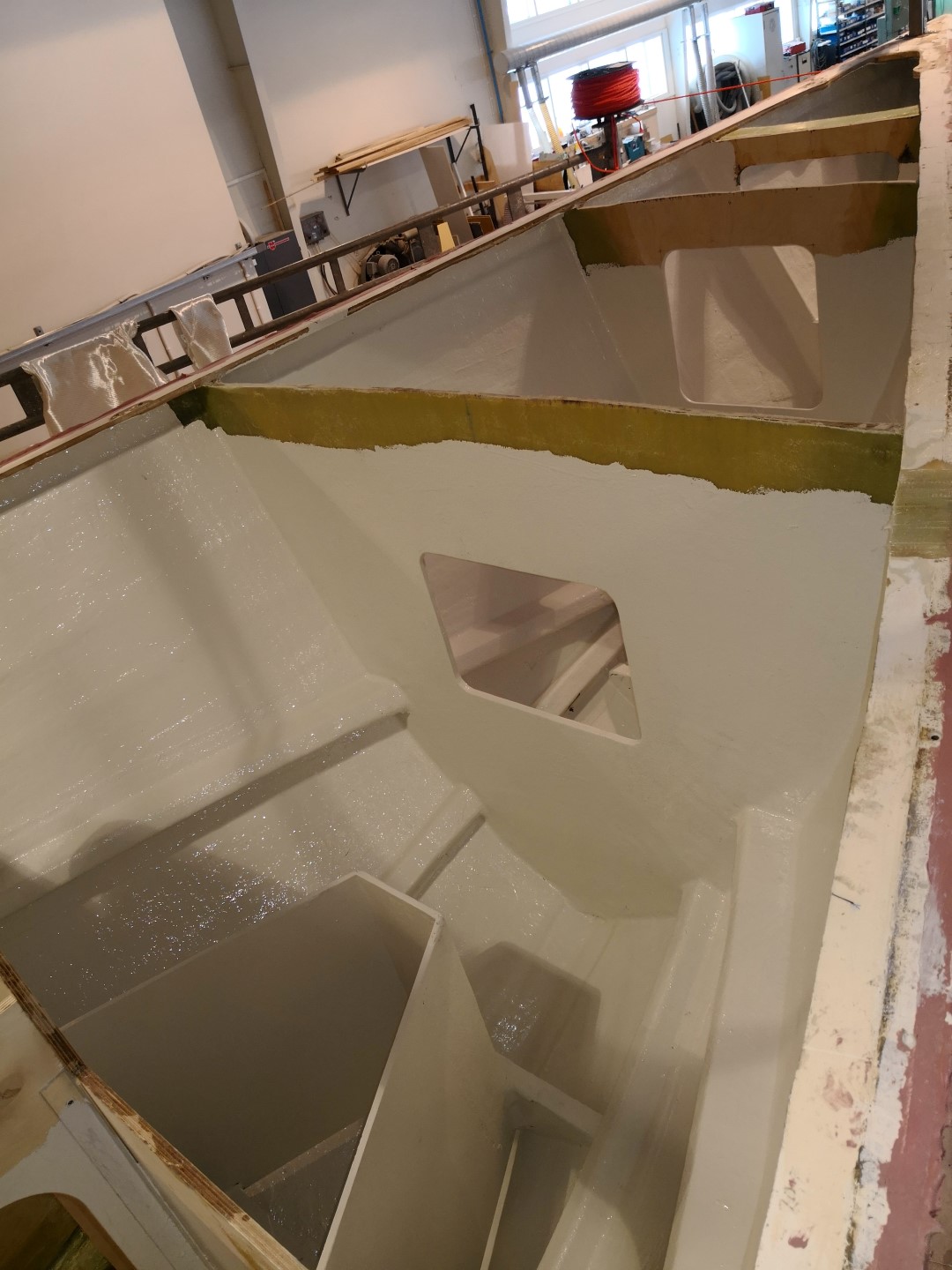
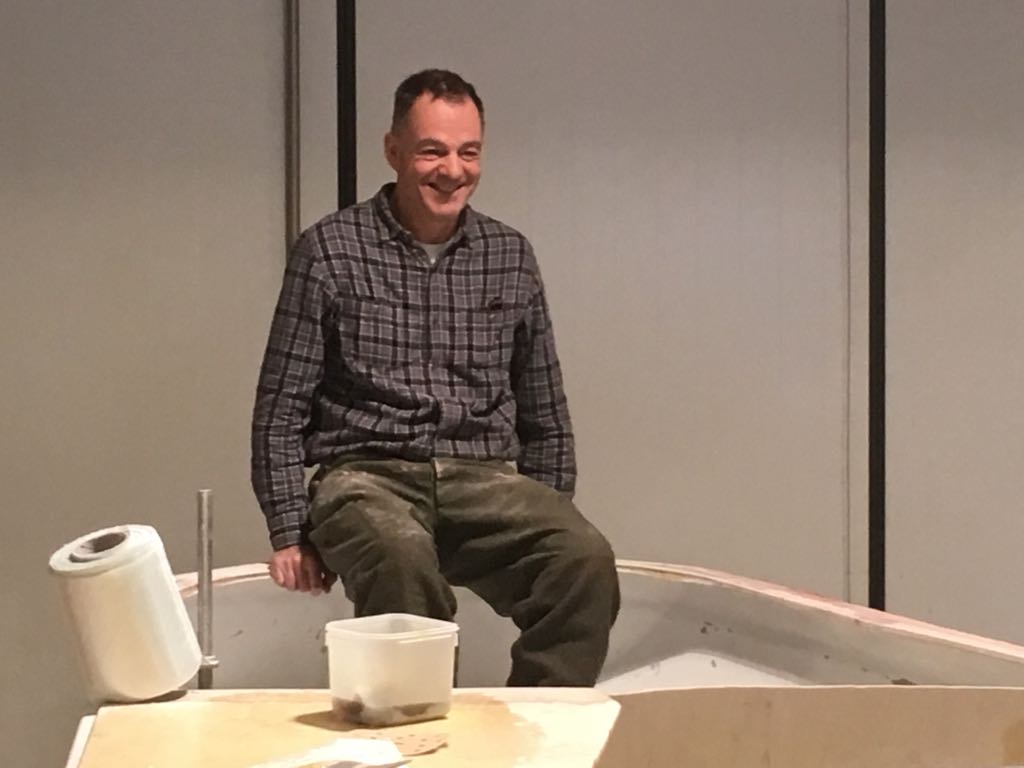
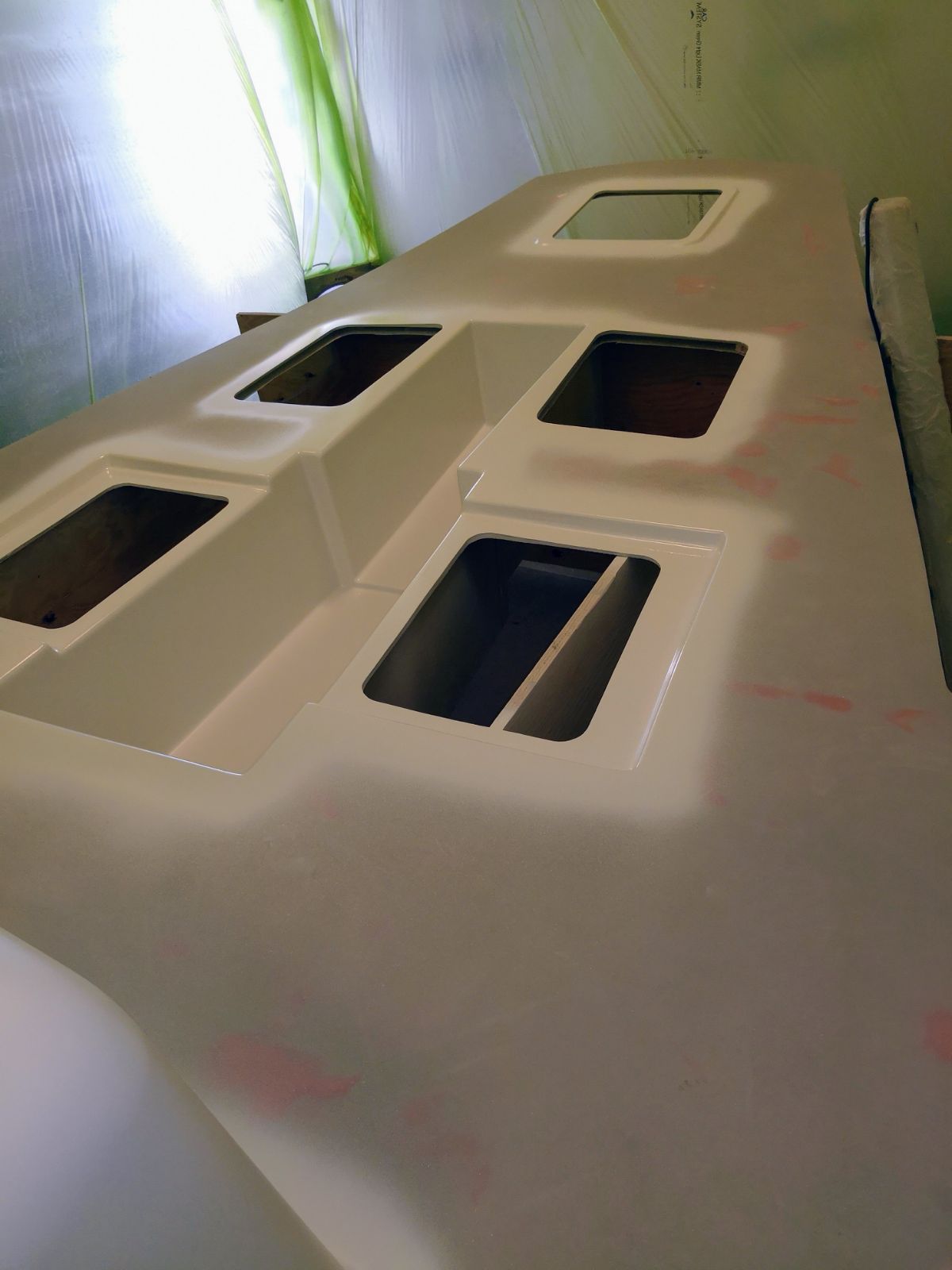
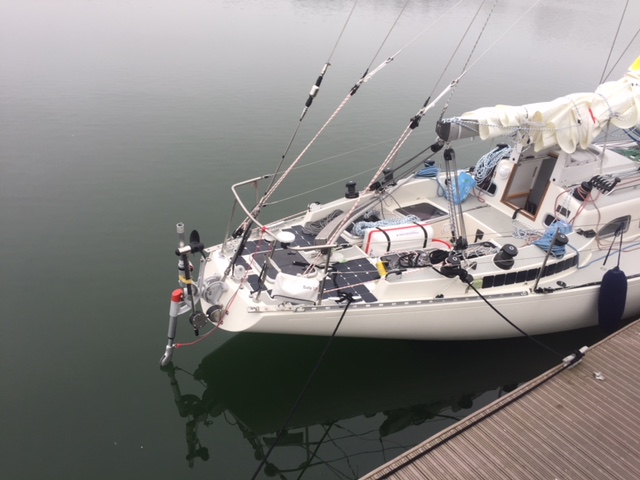
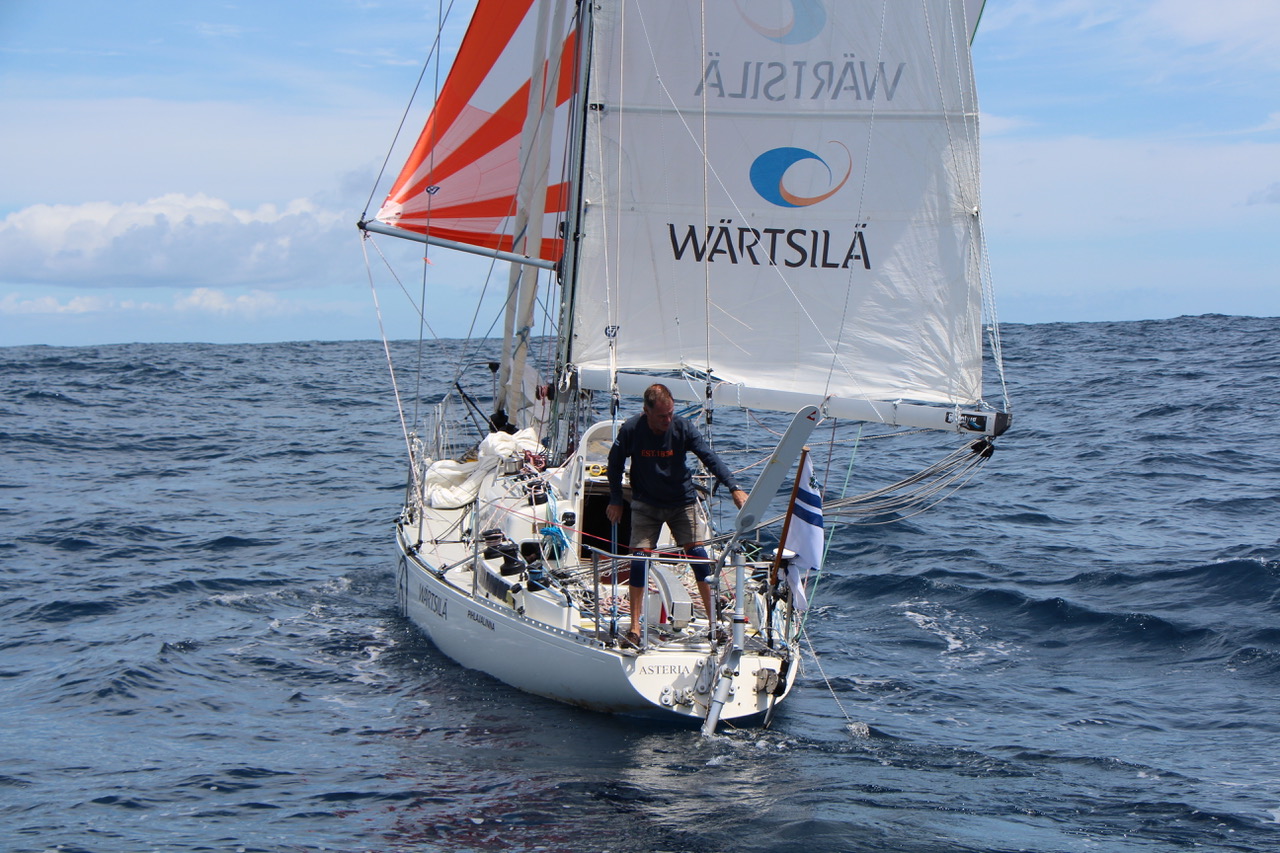 The “refit” – in truth not far short of a complete reconstruction – of Asteria has been comprehensively documented and one has to presume all of the details were shared with the organiser of the GGR during the process.
The “refit” – in truth not far short of a complete reconstruction – of Asteria has been comprehensively documented and one has to presume all of the details were shared with the organiser of the GGR during the process.
Besides three watertight bulkheads and foam buoyancy in the bow, Lehtinen added an additional pair of watertight bulkheads aft, which were not specified in the safety requirements of the race rules but he built in for added security. The first was just forward of the rudder tube, the second a few feet further forward. All through-hull fittings were position between the two to try and eliminate the risk of a failed skin fitting flooding the boat.
The photos I have to hand of Asteria’s refit do not allow me to verify exactly what was done in terms of aft bulkheads but it certainly appears all the bulkheads were installed before the deck was added.
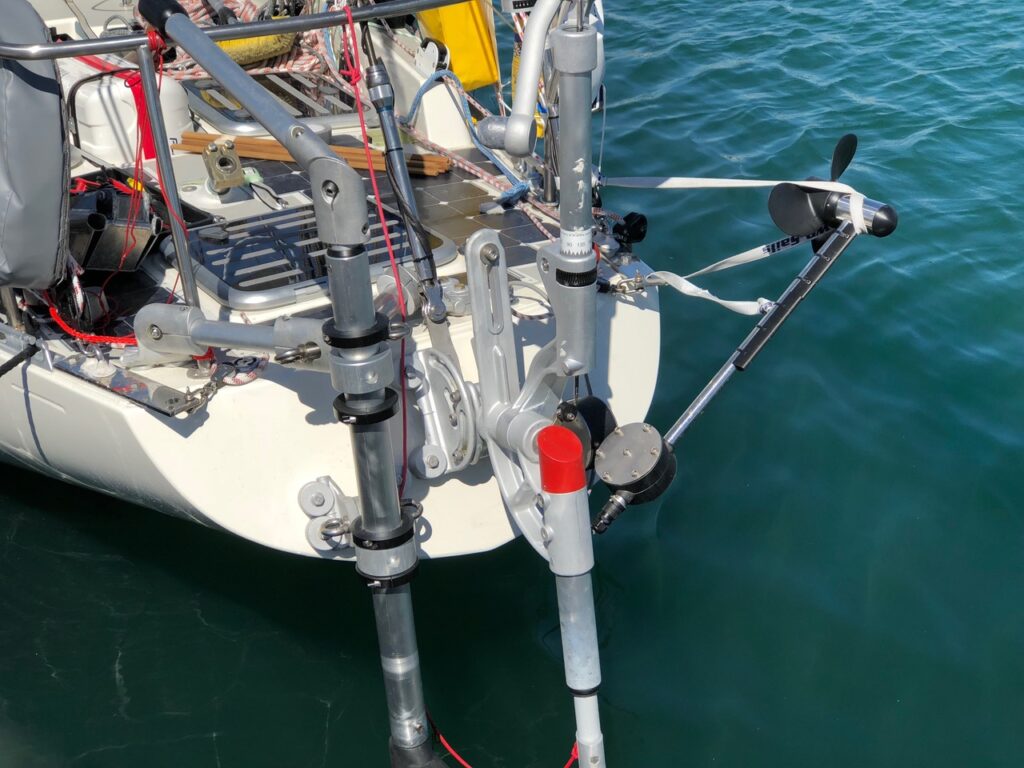
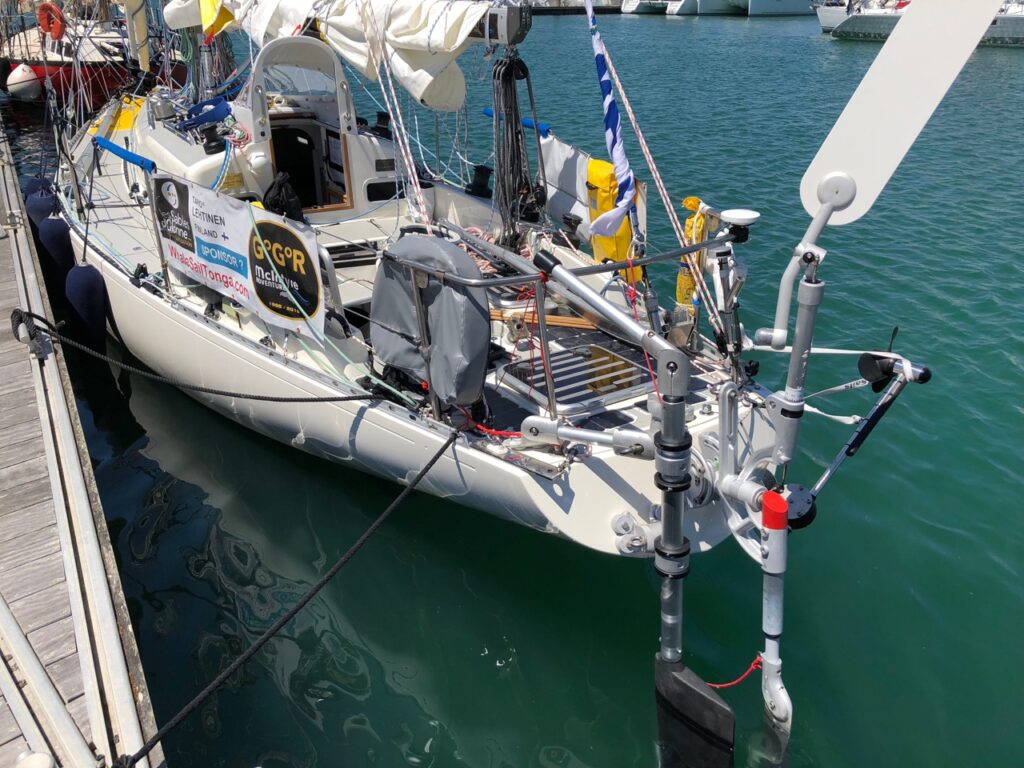 When I was working on Asteria, the only fittings in the stern area were the mounting for the Windpilot Pacific, two brackets for a SailingGen hydrogenerator and, on the port side, the bracket for an SOS Emergency Rudder (which was not required during the GGR 2018 and remained safely stowed below deck for the entire trip).
When I was working on Asteria, the only fittings in the stern area were the mounting for the Windpilot Pacific, two brackets for a SailingGen hydrogenerator and, on the port side, the bracket for an SOS Emergency Rudder (which was not required during the GGR 2018 and remained safely stowed below deck for the entire trip).
All the stowage compartments aft of the companionway were only accessible from the deck and were sealed with watertight hatches, an arrangement that Tapio clearly retained for the 2022 race.
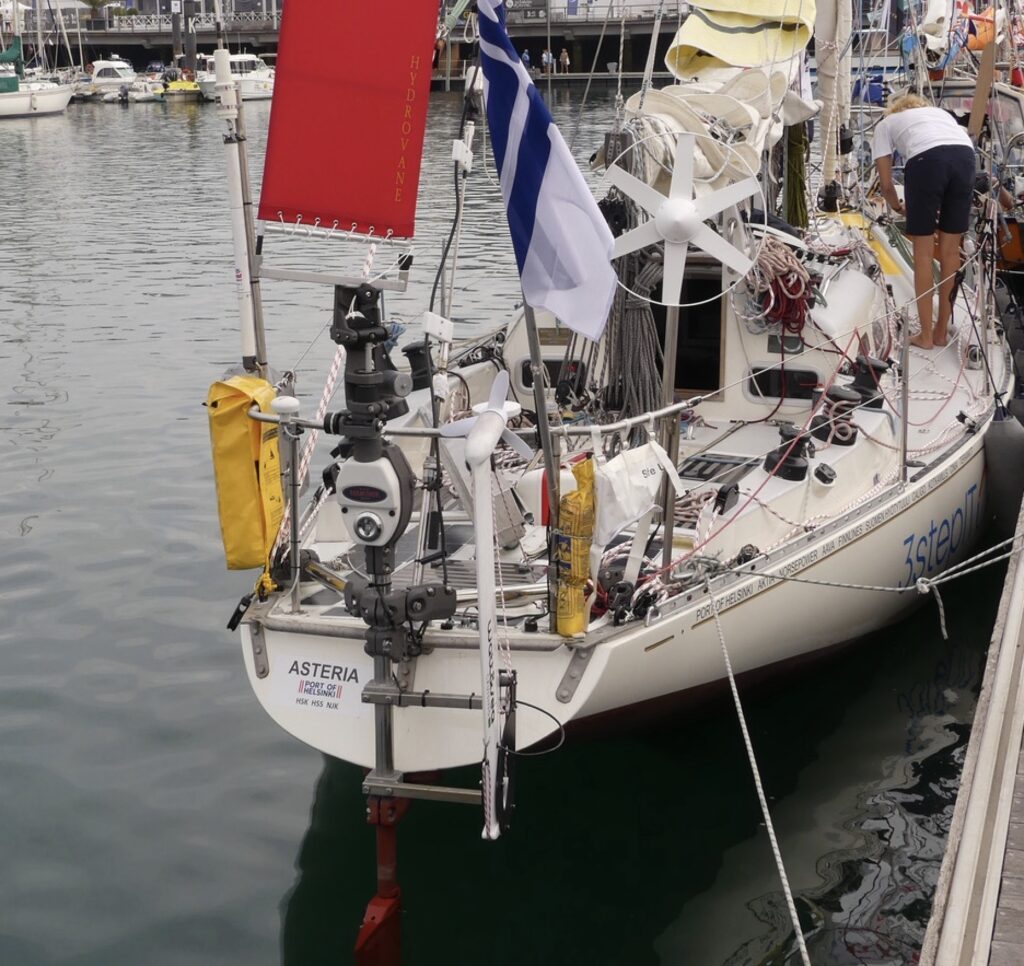 The Windpilot Pacific Tapio used for the GGR 2018 was replaced for the GGR 2022 by a Hydrovane, an auxiliary rudder system that places much greater loads on the transom and requires correspondingly robust mountings (the difference in the loads created by servo-pendulum systems and auxiliary rudder systems are explained here).
The Windpilot Pacific Tapio used for the GGR 2018 was replaced for the GGR 2022 by a Hydrovane, an auxiliary rudder system that places much greater loads on the transom and requires correspondingly robust mountings (the difference in the loads created by servo-pendulum systems and auxiliary rudder systems are explained here).
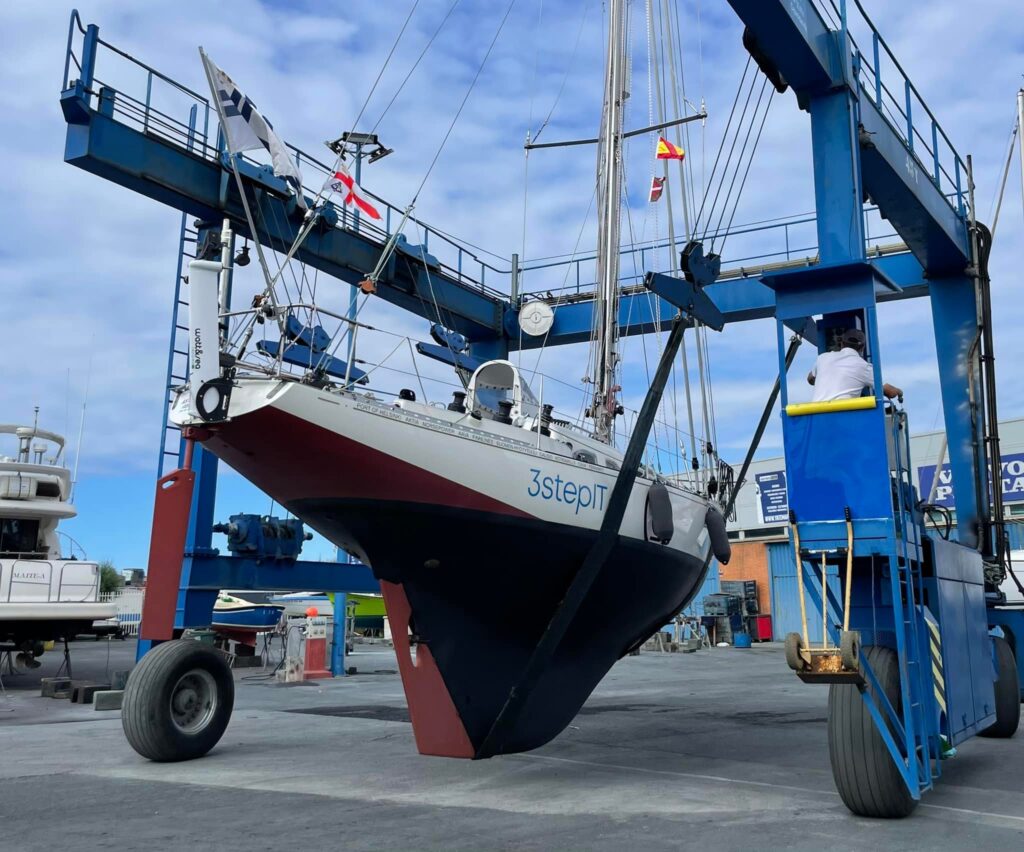
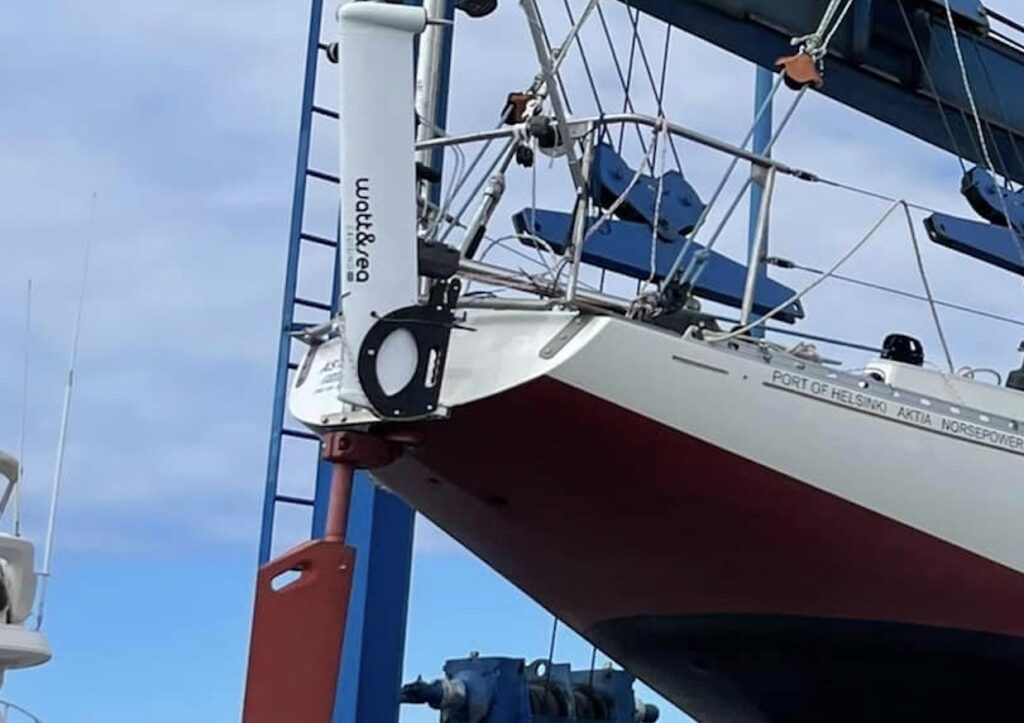 First principles tell us that the greater the spacing between the upper and lower mounting brackets of an auxiliary rudder system, the better the loads will be transferred to the hull. One of the striking features of Asteria, however, is its unusually low freeboard, which has inevitable consequences at the stern: Asteria’s transom measures just 40 cm (a little under 16 inches) bottom to top. The lower edge sits about 30 cm (one foot) above the static waterline. I presume it was a desire to space the mountings as far apart as possible that led to the Hydrovane’s lower bracket being installed on the underside of the hull rather than on the transom. While this might go some way to addressing one issue, it also potentially creates others:
First principles tell us that the greater the spacing between the upper and lower mounting brackets of an auxiliary rudder system, the better the loads will be transferred to the hull. One of the striking features of Asteria, however, is its unusually low freeboard, which has inevitable consequences at the stern: Asteria’s transom measures just 40 cm (a little under 16 inches) bottom to top. The lower edge sits about 30 cm (one foot) above the static waterline. I presume it was a desire to space the mountings as far apart as possible that led to the Hydrovane’s lower bracket being installed on the underside of the hull rather than on the transom. While this might go some way to addressing one issue, it also potentially creates others:
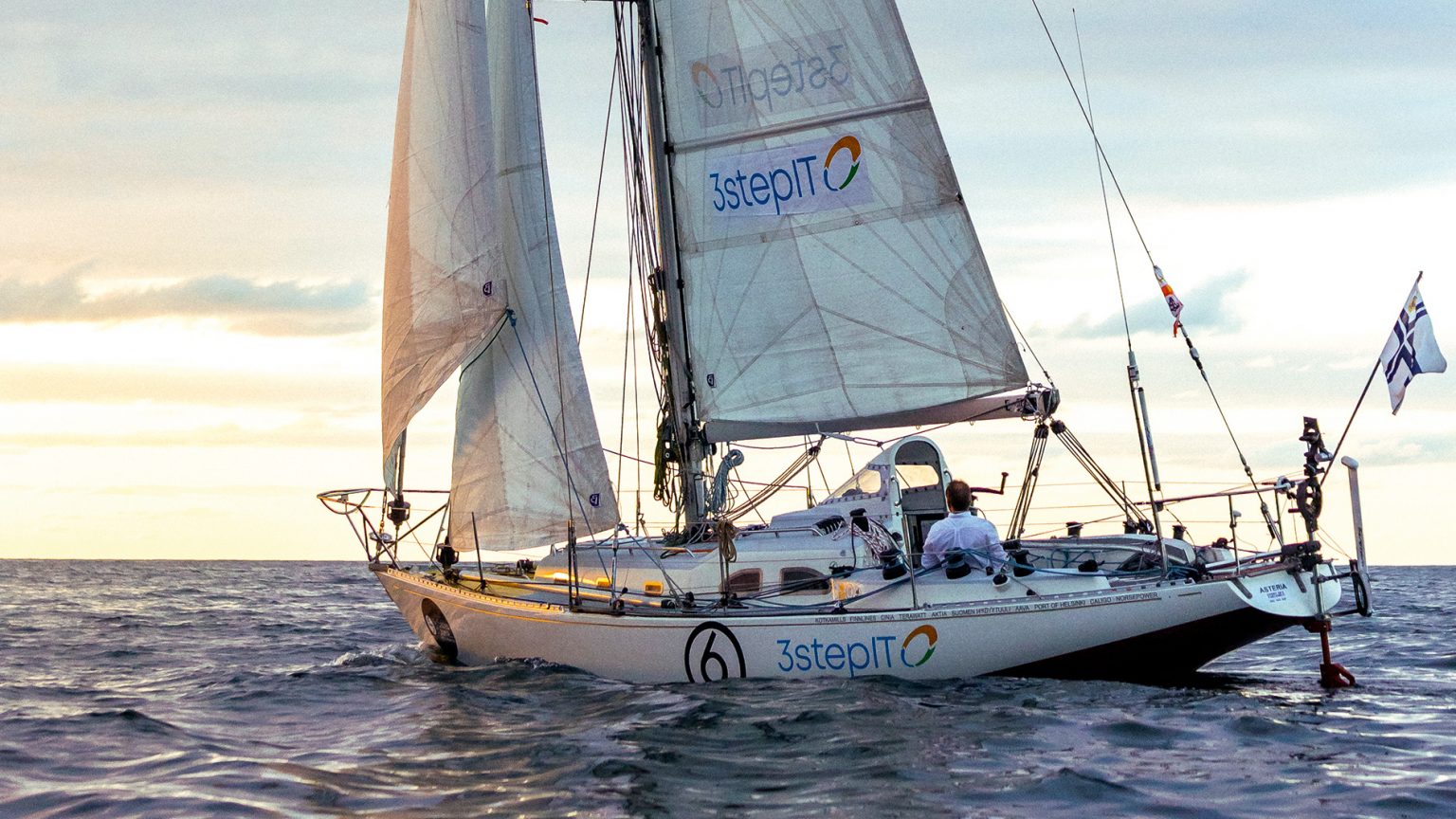
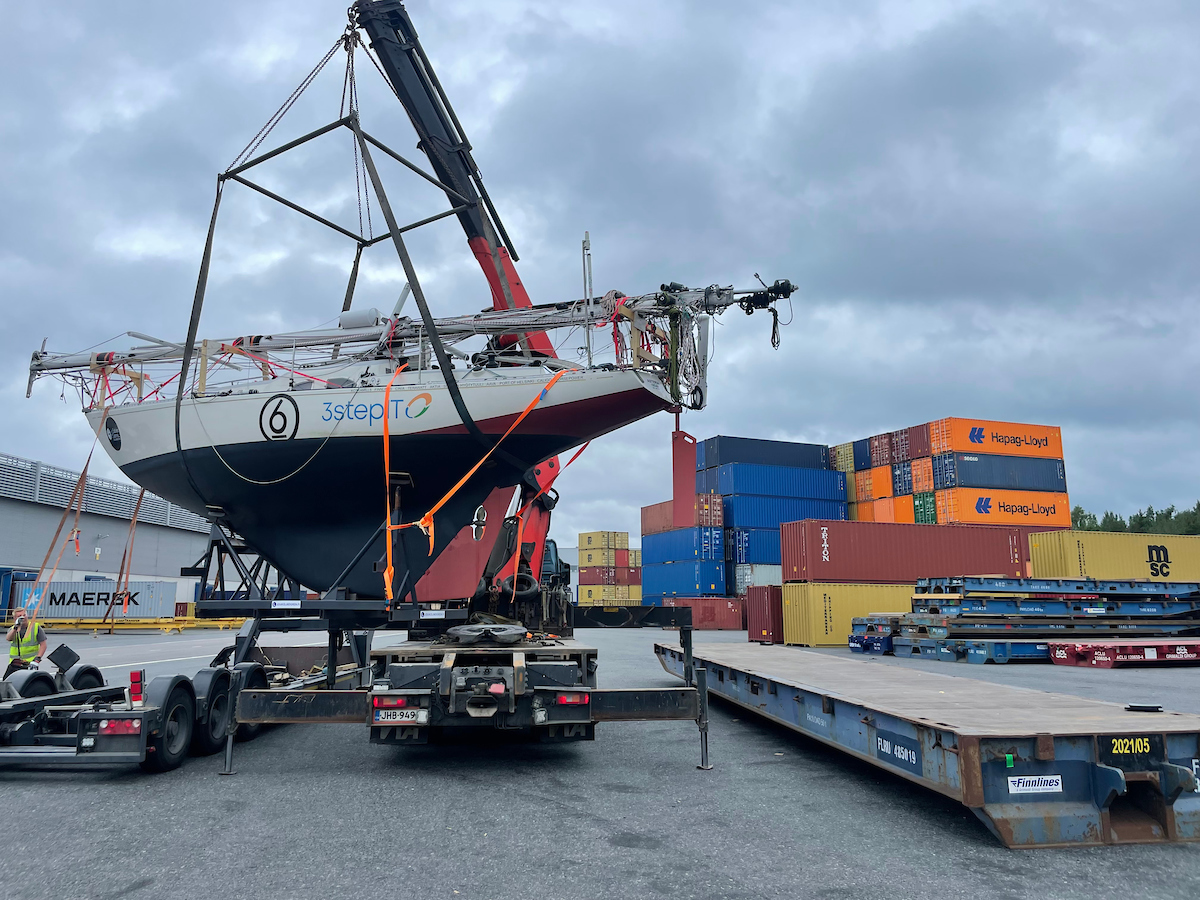
1. The underside of the hull aft may not be as strong as the adjacent transom – almost all GRP boats use a thicker, stronger laminate for the transom than for the rest of the hull because of the additional loads encountered in this area due to backstay attachments etc.
2. The distance between the vertical axis of the Hydrovane rudder shaft and the lower bracket is greater than it would otherwise be because the bracket is arranged horizontally rather than vertically – and more distance here means more leverage being exerted on the two vertical M10 bolts and the laminate through which they are fastened.
3. The horizontal positioning of the lower bracket means that the bolts (usually M10 bolts, which have a shaft thickness of 8.5 mm excluding threads) sit at 90 degrees to the direction of loading and are therefore also exposed to shear forces.
4. The underside of the hull is not a flat surface. It is distinctly curved in this area, so a wedge-shaped adaptor is required to accommodate the flat Hydrovane mounting bracket.
5. The whole of the lower part of the structure on which the Hydrovane is mounted will almost always be underwater when the boat is moving because the dynamic waterline extends all the way up to the bottom edge of the transom (which is why the antifouling extends so far up the topsides).
6. The bolts attaching the lower bracket for the Hydrovane are through-hull fittings but they are not positioned between the two watertight bulkheads referred to in the Yachting World report.
Looking at Asteria’s configuration, the following aspects give me cause for concern:
1. The distance between the tip of the Hydrovane auxiliary rudder and the lower mounting bracket may well be as much as 130 cm, which equates to quite significant leverage.
2. The distance between the lower and upper mounting struts is in the order of 40-50 cm.
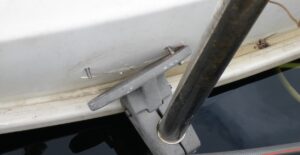
plane brackets fitted with 2 M10 bolts
3. There are two mounting struts at the top versus just one at bottom where loads will tend to be higher. This means that it presumably falls to just two M10 bolts (M10 bolts fastened to a convex hull surface) to transfer all the loads generated by the system at the lower end.
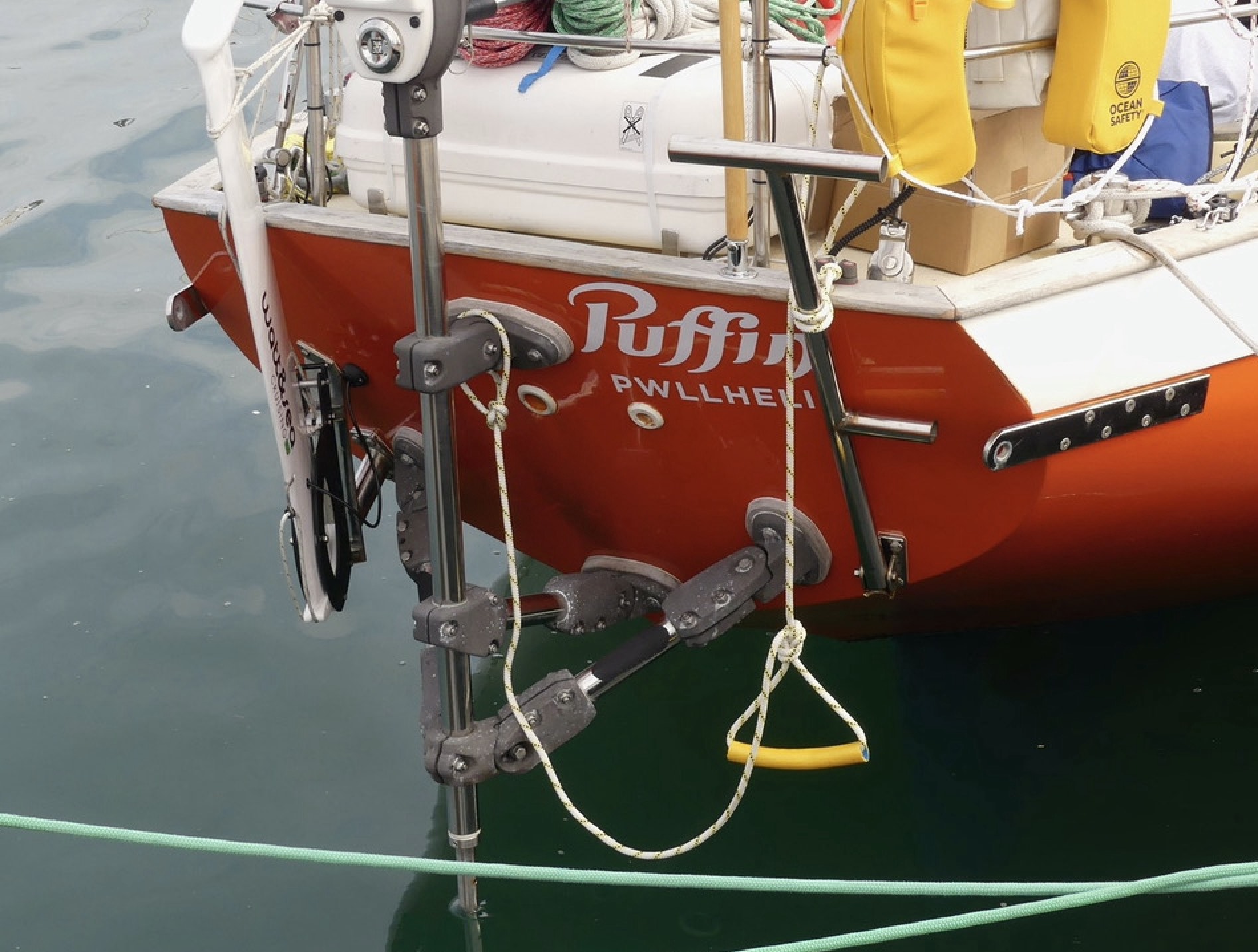 Puffin, for example, has things the other way around, with a single upper mounting point and multiple lower mounting points.
Puffin, for example, has things the other way around, with a single upper mounting point and multiple lower mounting points.
My fear is that the very substantial leverage generated by the auxiliary rudder system was more than Asteria could safely absorb indefinitely and that after 8,000 nautical miles or so, that lower mounting bracket began to work loose and the whole system began to move. This would only increase the loads passed to the hull and since the lower bracket is generally submerged at sea, any hull damage in this area would be a serious problem.
Tapio says, “I woke up to a loud bang”. There has been no mention of any impact or rig damage, so might this sudden noise have been the auxiliary rudder system bracket pulling out of the hull? It is not inconceivable that the rate of water ingress through the resulting hole could sink a boat in minutes.
I understand this is speculation and that we may never know what happened – indeed Tapio himself may have no idea what happened – but having spent a large (!) part of my life thinking about the best ways to mount windvane self-steering systems on boats, I cannot help but share my concerns.
Hopefully we will hear Tapio’s thoughts on possible causes of the sinking when the time is right. This, of course, is by far the most important element of the story: whatever it was that befell Asteria, at least we have only lost a boat.
UPDATE 21.November 2022: Tapio is describing the entire situation in finnish language He is mentioning that a collision has not taken place.
UPDATE 22.november 2022 from Finland is being reported that obviously Tapio told the Finnish broadcasting campany Yle, that the bang might have been the aft bulkhead collapsing.
UPDATE 23.november 2022
My sense is therefore is that while the steering system attachment theory has some merit, it is more likely that there are multiple factors involved, and that those may or may not include the self-steering system.
As a side note, in the IOR/RORC days, high backstay tensions were capable of “banana’ing” a boat. This typically resulted from over tensioning the backstay and pulling up on the transom. This forced the topsides outward sheering the hull to deck joint and tearing the tabbing on the bulkheads. While it does not seem likely that this is the cause of the sinking, it is possible that something similar damaged the bond between the bulkheads and the hull. But this last comment is wild conjecture on my part,
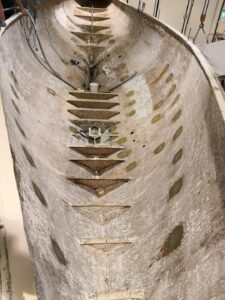
Tapio will presumably be able to provide answers here. For the GGR 2018, the Asteria was equipped with a particularly strongly dimensioned new mast including reinforced shrouds, whereas in the hull there are presumably no longitudinal stringers in the stern, as can be seen in the photos. It is therefore quite conceivable that the assumption made by Jeff Halpern could be correct.
UPDATE 24.november 2022
TAPIO EXPLAINS ASTERIA
UPDATE 28.november 2022
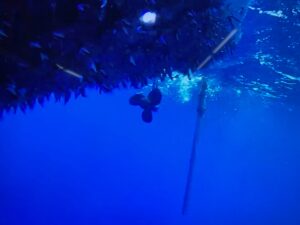
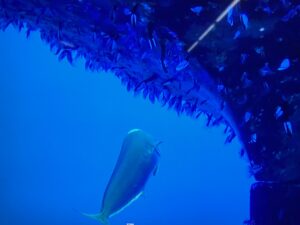
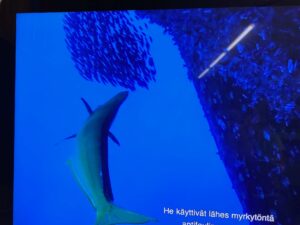
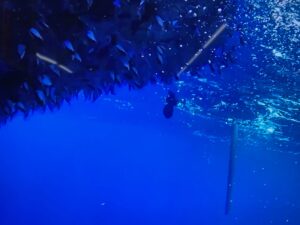
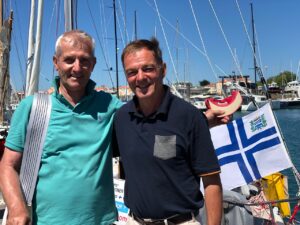 In June 2019, I met Tapio in Rendsburg. We let our thoughts wander in the evening sun. Tapio was already determined to offer his Asteria the same voyage again without a shell escort. Presumably the regatta sailor in him was his whip. He almost seemed sad that he didn’t have to face any heavy storms. Do I remember correctly that he would also have liked to pass a capsize once? In any case, skipper and ship appeared as one, Tapio’s unbounded confidence was contagious: ship and rig bulletproof. It could have all worked out! But it didn’t!
In June 2019, I met Tapio in Rendsburg. We let our thoughts wander in the evening sun. Tapio was already determined to offer his Asteria the same voyage again without a shell escort. Presumably the regatta sailor in him was his whip. He almost seemed sad that he didn’t have to face any heavy storms. Do I remember correctly that he would also have liked to pass a capsize once? In any case, skipper and ship appeared as one, Tapio’s unbounded confidence was contagious: ship and rig bulletproof. It could have all worked out! But it didn’t!
The Asteria probably inspired awe in every observer, for the mighty mast with enormously strong rigging gave no thought to how it was introduced into and carried by the hull? Could it be that Tapio or his advisors in Finland also lost sight of this aspect a little? A slender hull, presumably without any longitudinal stringers in the stern, raises exactly these questions in view of the sinking.
With today’s knowledge, I would consider the sinking of the Asteria to be tremendously lucky for Tapio, because the sinking happened in calm weather and help was quickly at hand. Tapio was saved, his life goes on. Presumably, the survival of this solo sailor would hardly have been possible in heavy weather or even a capsize, because the Asteria would have collapsed and sunk within minutes. The rescue of the skipper could then have become a challenge.
A different outcome of this disaster would also have been fraught with devastating consequences for the organiser, because well-rehearsed professional measures could fail if the basic substance of a ship was not sufficiently considered.
Seen in this light, the rescue for Tapio is also a blessing for Don, a good fortune that should not be put to the test, in my opinion.
INFORMATION ABOUT DON MCINTYRE AND WINDVANE SYSTEMS
REASONS ABOUT WHY ONLY TWO WINDPILOT ENTRIES IN GGR 2022?
Peter Foerthmann
Hamburg, 20 November 2022


































Brillant description (with perfect pictures) of the most probable reason for the “bang” and fast sinking. The question which remains for Tapio, is whether there were any kind of “warning signals” during the 8000nM voyage till that moment (sounds, vibrations etc). Thank you!
Maybe the prop? Some cruisers prefer a fixed with three blades which create a lot of pressure compared to folding. If a fixed is left running the coupling shaft to engine might get loose. Pity with Tapios good-looking boat.
Excellent theory breakdown and quite plausible.
Hydrostatic pressure created behind the aft bulkhead is relatively small, so likelihood of bulkhead collapsing instantly is small. It is above static waterline and mainly above dynamic waterline – even when full water or heeling. Also the area where the lower support is attached is having significant strength due to molding process in two parts. Of course having an issue at the same time, two parts. I bet that these have been checked on refit. If hydrovane lower support would have been ripped of from the bottom and leaving a hole, hydrovane would not been steering. Vane would not been standing there at all, hopefully Tapio remembers if that have been missing. So yes, a risky position – small distances between attachments, but at least I have hard times to believe that would have caused such an instant inrush of water. That would require 4-8″ hole somewhere closer to engine compartment.
While the theories about the failure of the attachment of the windvane/ auxiliary rudder system are entirely plausible, that theory cannot be the entire story. The reason that I say that is that there were two watertight compartments between the transom and the cabin. It seems to me that if the steering system tore off a piece of the transom and bottom, simply breaching those areas would have only flooded the aft waterproof compartment.
Even if it is assumed that the transom and counter were breached massively, the vertical height of the water in the aft compartment would be limited to the distance between the breach and the low point of the hull, which (judging by the pictures) is perhaps 30-40 cm. And while there would be some free surface affect, with the bulkhead perhaps a meter or so forward of the transom, it is hard to imagine frees surface effect generating enough force to blow out the two watertight bulkheads if they were reasonably well constructed (which aft bulkhead appears to be in the photo).
More to the point, assuming the theory stated above is correct, without breaching both watertight bulkheads, I respectfully suggest that the boat could not sink that quickly even if it lost a large chunk of its transom and bottom within the after compartment.
My sense is therefore is that while the steering system attachment theory has some merit, it is more likely that there are multiple factors involved, and that those may or may not include the self-steering system.
As a side note, in the IOR/RORC days, high backstay tensions were capable of “banana’ing” a boat. This typically resulted from over tensioning the backstay and pulling up on the transom. This forced the topsides outward sheering the hull to deck joint and tearing the tabbing on the bulkheads. While it does not seem likely that this is the cause of the sinking, it is possible that something similar damaged the bond between the bulkheads and the hull. But this last comment is wild conjecture on my part,
The HV attachment is the most obvious weak spot here, in what is otherwise a very strong boat.
The short distance between top and bottom bracket, the huge vertical lever to the bottom of the HV rudder and the extra lever forward (!!) to the attachment point of the bottom bracket all work together to create enormous moments/forces, which have to be absorbed by just 2 x M10 bolts and the surrounding laminate.
This is a very confined area as well, which provides only very limited access (without taking the boat apart) to install backing plates and strengthening of laminate etc as is recommended in the HV manual!
This looks like an accident waiting to happen?
Oliver Schönrock
There were 2 watertight compartments in stern of Asteria. Bulkheads do not fail very easily, they are simple and easy to use, with no moving parts. We find them in all boats, so theres no lack of data points. If the leak would be in the transom and in the fastening points of the HV, would it have to break through not only one, but two watertight bulkheads? Normally boat like Asteria would happily sail on with the last watertight compartment filled with water and racing sailor like Tapio would definetely sense it in the movements of the boat, if there suddenly would be couple hundred kilos of extra weight in the back. Also the last compartment was in the light winds completely over the waterline, so if there would have been a leak in the bottom, it would also have drained out in the light winds. Only way to fill it completely is from the top. I really dont see this happening due to the HV failure.
Another thing is that saloon filled up quickly (5min), but the last stages of the event took 20min with the waterline decklevel. We know for sure that the saloon was flooded. If all the compartments in the stern would have failed the boat would have gone under in one go. The fact that boat went under stern first might be just because the compartments in the bow were bigger and they were not finally big enought to keep Asteria afloat.
What is not clear is why he changed from a perfectly good Windpilot Pacific vane to a Hydrovane, particularly given the mounting challenges of installing one. Can someone please explain? Thank you
@Ronald
He changed, because Asteria has an unusual rudder, which is very far forward in the boat (see pics). Because it is so close to the centre of the boat, it cannot provide much steering force/torque. So even if a pendulum system like the Winpilot Pacific gives a strong steering signal it will not result in a very strong steering force/moment via the main rudder.
The HV is an auxillary rudder system which is mounted right at the back and there, unusually, has a (perceived) advantage in this respect over a servo pendulum system in terms of potentially providing more steering input to the boat.
Tapio thought this would give him better performance in the race. He is quoted saying that in several places.
Oliver
I fully agree with Oliver Schoenrock.
Lets wait for Tapios explanation (no clue?)…., and if there where any “warning signals” during the 8000 nM voyage!
I saw some strange course changes before the sinking (?)….
There are massive forces on the hull/stern with HV at the stern of the boat (I experienced it).
Very good analysis but we are assuming that no butt blocks were used on the inside of the hull to spread the load which would be standard practice.
A friend of mine, Nick Batty, lost his yacht during a circumnavigation with seemingly similar circumstances. Hence I have been pondering possible causes. Whilst purely conjecture (albeit of a Naval Architect), I wonder if the encapsulated ballast long keels in yachts of Asteria’s vintage can potentially suffer catastrophic hull failure through fatigue. I know GRP has proved far more resistant to fatigue failure than anticipated in the 1970s but – when you subject a yacht of Asteria’s age to prolonged oceanic conditions – is it possible that limit has been reached? Moreover, the refit seemed to focus on replacing the deck and bulkheads with only an epoxy coating to the skin (inside and out). Local stiffness might have exacerbated fatigue at the keel root between bulkheads. Crack propogation would account for the noise and its relatively deep immersion , the quick ingress of water. Tapio is a consumate seaman so it is difficult to imagine he would have been sailing with any of Asteria’s watertight integrity relaxed or compromised.
I am interested in this possible scenario because we imagine yachts of Gaia 36 vintage being well-founded, over-engineered, seaworthy craft – but do they now have an inherent weakness that is difficult to evaluate?
Tapio was sailing in an area influenced by the Agulhas current. This current runs in a Southerly direction down the East African coast picking up all types of marine litter from semi submerged shipping containers, tree trunks and all sorts of other bulky objects. With the variable direction through the water steering with a wind vane system it is not beyond possibility that the boat suffered a glancing blow to a shipping container ripping a serious gash in the hull. Over the years many boats attempting a circumnavigation have been damaged in this general area. Sam Davies in the last Vendee Globe comes to mind. For such a well built boat to sink so quickly it has to have been a catastrophic breach of the hull.
I have sailed very little but power boated quite a bit, and I have built and repaired various boats etc.
I am not a mathematician, but if there was just a 4″ hole from a ripped out anchor point, that won’t sink a boat that size in 5 minutes and there is no meaningful “pressure” that is generated from a couple dozen(or hundreds) of gallons water against a sealed fiberglass/wood bulkhead that it would fail unless REALLY poorly constructed which doesn’t seem likely by this apparently thorough and experienced guy.
In addition, if a 4″ hole was the problem he could have done as merchant and military marines have done for ages with wooden boats that sustained minor damage and just dropped a spare sail around the hull to be sucked into the rupture to drastically reduce the inflow so as to buy time to make a repair.
Or has this become a lost art ??
I think it is much more likely that a sharp edge punched a BIG HOLE OR CRACK or that the hull cracked from some over-pressure on a tensioned line.
He would have really had to misattach the steering anchor into a very weak hull section to cause a crack big enough to sink a boat of this size that quickly.
However, if he somehow overlooked this error, I think that it forced a large crack to open and not a small hole.
It is also possible in theory that the naval architect above is correct about a catastrophic keel failure. I have ZERO familiarity with an understanding of those loads, but again the idea of a long crack in fiberglass is easier to accept than a large hole simply because of the way fiberglass reacts to stresses and blunt injury.
Thank you for your article. As usual full of interesting information. I have been following Tapio’s Asteria sinking from as many online sources as I can find and have come to similar conclusions.
My thoughts as follows:
The cantilevered hydrovane rudderstock exerts considerable transverse loads from normal rudder hydrodynamic force to the lower bearing bracket. These loads can be calculated from vessel speed and rudder area etc.
Additional wave impact loads to the rudder can be considerable, these are difficult to determine as the speed of wave impact can be very high. The hydrovane rudder as mounted on Asteria’s long stern overhang appears particularly prone to wave damage.
The loads from the Windpilot, or any servo pendulum system, are a small fraction of the loads from a direct mounted Hydrovane rudder.
The rudder lateral load multiplied by the long cantilever arm provides the moment that must be reacted against by the upper and lower bearings and related mountings. The smaller the distance between the mounts the higher the force that is absorbed by the fastenings. As you point out the distance between bearings is small and the loads are relatively high.
IMO The two lower bearing bracket bolts (10mm) in sheer are likely to exceed the GRP hull load bearing capacity (depending on GRP thickness in the bolting area). The holes through the GRP may elongate and cause local weaking of the GRP hull skin laminate. The allowed GRP bearing load can also be easily calculated.
The local GRP damage from the failed bracket mounting bolts can spread to the transom hull tabbing, and result in catastrophic structural failure in the transom area as the damage propagates.
Stainless steel bolts will suffer fatigue from the cyclic loading. The bolts are semi-submerged and may be vulnerable to stress corrosion cracking.
Should the lower support mounting bolts fail (THE BANG?) the Hydrovane would rotate around the upper bearing supports which would likely cause sections of the deck to be ripped off and a hull breach at the lower mounting area allowing down flooding into the vessel.
Tabbing of bulkheads and transom appears minimal from the images contained in your report.
The very narrow hull cross section at the stern is less able to withstand torsional twisting from the Hydrovane rudder loads. Tortional loads in the hull shell would be absorbed and the partly transferred to the transom and bulkhead tabbing.
Failure of the transom or bulkhead hull bond (tabbing) could compromise the panel edge stiffness and could lead to bulkhead failure through buckling and allow water to flood into the vessel interior.
A further consideration is the oversized rigging and mast section.
I understand rigging is upsized from 8mm to 12mm? Standing rigging is normally pre-loaded to approximately 15-20% of the breaking strain. The much larger mast section would require significantly more back stay tension to achieve the required mast prebend. I expect the backstay static loading would be significantly higher and this additional global load may not have been
adequately considered for the scantlings calculations and may be a compounding factor.
I expect we may hear more in due course. Seems Hydrovane may not be the best
horse to back… I do get there are advantages and disadvantages to the different windvane configurations.
Tragic result, but interesting discussion. I can only add my gut feeling to all the interesting theories put forward but as a lifetime naval architect, here is what they are.
Although the auxiliarly steering does not have a favourable mount and had to be attached to a transon that has very low height, I really doubt this is the main cause of sinking. Sure, loads could be high enough in storm conditions to cause transom failure, but not only is the transom quite high above the water, but I understand conditions were relatively quiet when this happened. The major stress riser to me is from the backstay. With the stronger mast and heavier wire, this could have been set up ‘on the strong side’, creating high loads in the bottom skin between the real rudder and the transom. We can factor in some aging fierglass that may well have had a high percentage of CSM in its construction that was quite normal at the time this boat was built … fine for overall hydrostatic pressure, but weak for high tension. So let’s assme this was the normal sailing condition. Things can all hold together like this and no one is really aware of how close the skin might be to its limit.
Now add to this a collision with some rugged flotsam, like the corner of a submerged contained that the boat may have just dropped down on in a wave. While just ‘a hard bump’ if the hull was normally stressed, this could easily be ‘the bursting of the balloon or egg’, if the hull was already close to its limit. The whole after bottom could then explode open with a bang and almost instantly fill both watertight compartments and quickly flow forward into the cabin area. So yes, an accident waiting to happen, but all well concealed within the old skin of the hull. So whenever adding new rigging loads to an old boat, its essential to add new longitudinals to the bottom shell to take the new load. All conjecture on my part, but I submit this as very feasible as we await Tapio’s input.
Congrats to all who pulled off his safe rescue
All of the comments concerning the sinking of Asteria appear to be well reasoned. My modest contribution would be “all of the above” when placed under overarching comments written here by Keri Harris.
In June 2019, I met Tapio in Rendsburg. We let our thoughts wander in the evening sun. Tapio was already determined to offer his Asteria the same voyage again without a shell escort. Presumably the regatta sailor in him was his whip. He almost seemed sad that he didn’t have to face any heavy storms. Do I remember correctly that he would also have liked to pass a capsize once? In any case, skipper and ship appeared as one, Tapio’s unbounded confidence was contagious: ship and rig bulletproof. It could have all worked out! But it didn’t!
The Asteria probably inspired awe in every observer, for the mighty mast with enormously strong rigging gave no thought to how it was introduced into and carried by the hull? Could it be that Tapio or his advisors in Finland also lost sight of this aspect a little? A slender hull, presumably without any longitudinal stringers in the stern, raises exactly these questions in view of the sinking.
With today’s knowledge, I would consider the sinking of the Asteria to be tremendously lucky for Tapio, because the sinking happened in calm weather and help was quickly at hand. Tapio was saved, his life goes on. Presumably, the survival of this solo sailor would hardly have been possible in heavy weather or even a capsize, because the Asteria would have collapsed and sunk within minutes. The rescue of the skipper could then have become a challenge.
A different outcome of this disaster would also have been fraught with devastating consequences for the organiser, because well-rehearsed professional measures could fail if the basic substance of a ship was not sufficiently considered.
Seen in this light, the rescue for Tapio is also a blessing for Don, a good fortune that should not be put to the test, in my opinion.
Hamburg 28.11.2022
Peter Foerthmann
Translated with http://www.DeepL.com/Translator (free version)
Asteria’s rudder was modified for this race completely and area below lowest hinges was about doubled. Try to find the pictures. But it was totally different compared to original elliptical one. Area overall was also bigger but especially the lowest part. Hinges looked exactly the same. So this is one major difference w Hydrovane instead of wind pilot. Hinge failure would cause catastrophic results.
Hi Peter,
A few days ago we arrived in Puerto Williams from the Pacific. We had an uneventful crossing from Rapa Iti in the Austral Islands. Sure we had some weather but nothing extreme. The Windpilot steered all the way and as usual without any problems. Even a bit better then before for I had made a new pendulum rudder since the old wooden one had gotten very rough on the surface. So the new slick one performed even better.
Just heard of the Finish guy that needed to be rescued from the GGR. If your boat fills up with water so quickly you must have a major hole somewhere. Not just a hose coming of. Did the lower support of the Hydrovane rip out? The upper support looks pretty solid on the pictures but you can’t see any on the lower support. Would be interesting to know if the Hydrovane was still in upright positon when he had to step into the liferaft?
Some questions may arise:
Is the Watt&+Sea also mounted to the Hydrovane? To make matters worse?
How watertight were the watertight bulkheads then?
Guess Tapio must have seen if the Hydrovane had shifted?
But will you get honest answers since they al seem to cover their sponsers????
Cheers Mark en Caro on board Jonathan
after reading this report of Mr Tapio disaster I feel all potential problems and reasons have been carefully addressed. In my opinion the change for the new self steering has been kind of wrong step on this boat.
However accidents like that looks like a chain. Everything must come together!
Jayme Souza onboard Suleca from Brazil
Hallo Peter,
Auch ich verfolge das GGR 2022 mit all dem Drama und Publicity.
Das lange Video der Bootsbau-Experten zum tragischen Verlust von Tapio’s S+S blieb ohne Ergebnis, und das unglaublich schnelle Sinken übers Heck wurde am Ende auf eine mysteriöse Kollision geschoben. Ich stimme Dir bei dass die Belastung der Hydrovane auf den elegant-grazilen Spiegel durchaus die wirkliche Ursache gewesen sein könnte.
Nun schnitzt sich Abhil aus Klotüre, Kartentisch und Notruder immer wieder neue Pendulumruder für seine Windpilot. Er segelt extrem an oder auch weit über den Grenzen, beide Windgeneratoren waren z.B. unter Wasser. Vielleicht erklärt das sein Problem der WSA, das nur eines von sehr vielen auf seiner Reise ist. Weisst Du wodurch sein WSA Problem verursacht ist, immerhin hat er angeblich zwei Anlagen an Bord.
Du weisst, ich bin überzeugt vom Jordan Drogue in Sturm, der lt. englischer Definiton erst ab 10 Bft. beginnt. Damit sind solch massive und zerstörerische Knockdowns ausgeschlossen, die keine WSA mehr meistern kann. Siehe Kapitel 14 in der neuen Ausgabe von Heavy Weather Sailing, Edition 8.
In nun knapp 300K Seemeilen habe ich nur einmal im Sturm von Hand gesteuert und wäre dabei südlich von Australien fast durchgekentert. Wenn die Aries es nicht mehr schafft, kann ich es eben auch nicht. Meiner Meinung gibt es keine Situation um mit einer guten WSA selbst steuern zu müssen.
Der Schaden an der Aries von Patrick ist noch immer nicht erklärt. Angeblich rutschte der 25mm Hauptschaft heraus (ist doppelt gesichert), ohne dass Teile verloren gingen oder die Anlage selbst bsschädigt wurde. Freunde von mir die selbst eine Aries haben, sprachen kürzlich mit Patrick in Lanzarote, Patrick hielt sich bedeckt.
Warum ich Dir schreibe? Vielleicht weil ich wie Du weiss wie kritisch eine gut funktionierende und gut montierte WSA für Solosegler gerade auf eine solch einer 8+ Monate langen Reise ist.
Vielleicht auch weil es an der Zeit ist mal mit Dir Kontakt aufzunehmen?
Mit Grüssen,
Nehaj-Susanne